How to Use Calming Music for Traveling Cats

Traveling with cats can be very stressful—not only for you but also for your furry friend.
Cats are creatures of comfort that do not adapt well to changes in their environment, especially on long trips.
Fortunately, there’s one simple yet powerful solution for soothing your cat: calming music.
The efficiency of calming music to reduce anxiety in cats has been proven, making the travel experience much more comfortable.
Whether you’re going on a road trip with your cat or flying with them, calming music might be the secret to a successful trip.
In this article, we will discuss how calming music can help your cats during travel and provide some vital tips on how to choose the right kind of music for your feline friend.
We’ll also share practical suggestions on how to incorporate calming music into your routine.
If you’re wondering how to make your next trip with your cat a little less stressful, then you’re in the right place.
Table of Contents
Why Calming Music Helps Cats During Travel
Travel is often considered one of the most daunting experiences for pet owners, as cats are highly sensitive to new environments and loud noises.
These unfamiliar sights, sounds, and movements can cause anxiety in cats, which may manifest in restlessness, hiding, or excessive vocalization.
But why does calming music work so well for them?
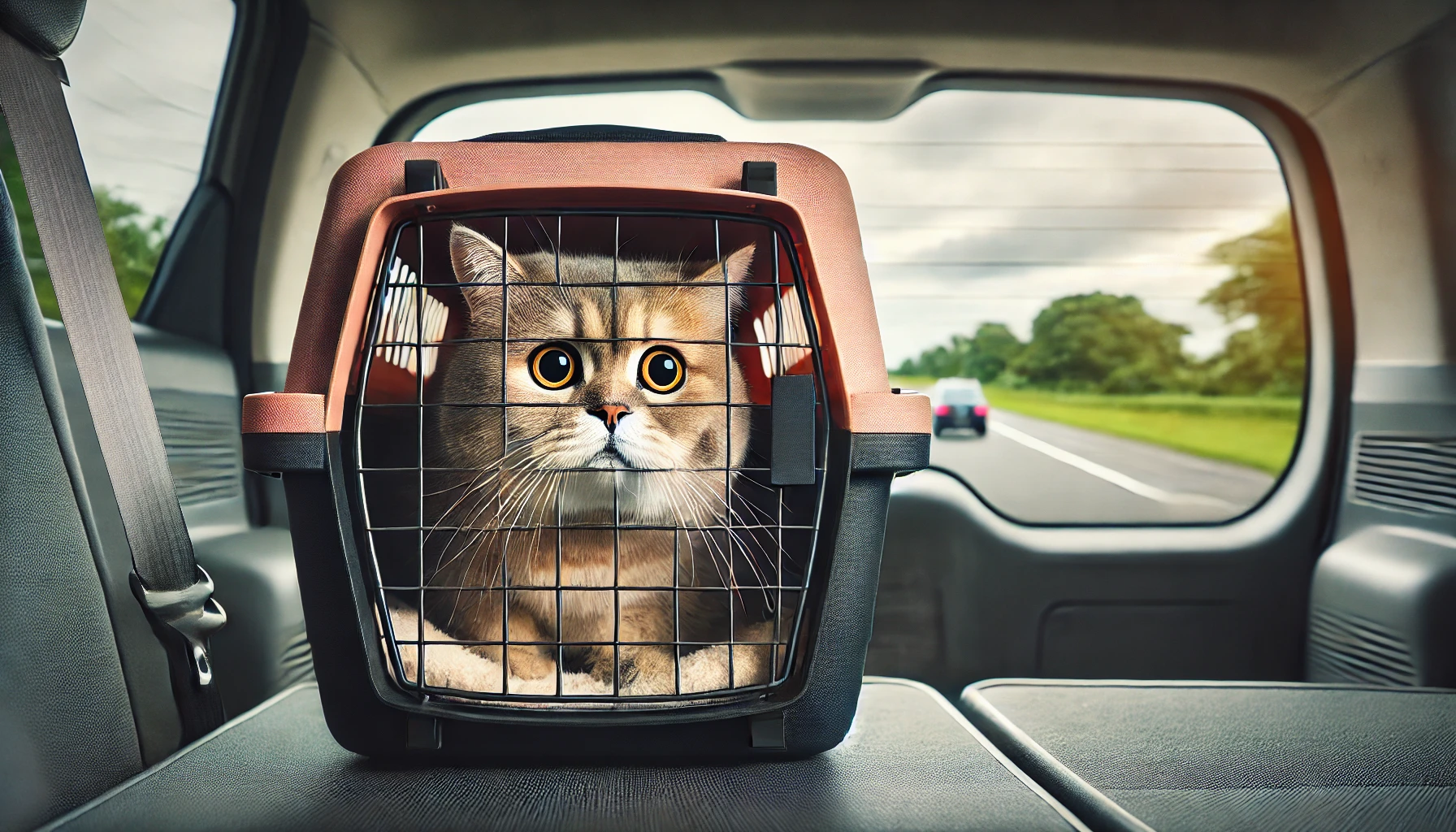
Understanding Feline Stress During Travel
Travel exposes cats to new stimuli, which can easily overwhelm them.
In response to potential danger, cats may exhibit signs like excessive meowing, panting, drooling, or even aggression.
The sudden environmental changes, combined with unusual smells and the motion of a vehicle, can cause significant stress for cats.
Calming music helps by creating a familiar and soothing environment, masking outside noises and vibrations.
It tranquilizes the nervous system, helping them remain relaxed.
Just as music helps humans unwind, calming music creates a sense of security for cats.

The Science Behind Calming Music for Cats
Research has shown that cats respond well to specific types of music that mimic natural sounds.
For example, calming music with soft rhythms and slow tempos can mimic purring or gentle vocalizations.
Music with frequencies that match the range of a cat’s hearing can be even more effective at calming them.
When you play calming music for your cat during travel, it provides solace and helps them focus on the comforting sounds instead of the chaos around them.

How Music Affects Feline Anxiety
Travel-related anxiety in cats is not uncommon, and music can calm them by engaging the brain’s relaxation centers.
When cats listen to calming music, it can slow their heart rate, reduce their breathing rate, and lower levels of cortisol and other stress hormones.
This physiological response significantly reduces the discomfort your cat may feel during travel.

Benefits of Calming Music on Long Journeys
On long drives or flights, calming music has even greater benefits.
Instead of being on high alert for hours, the music keeps your cat in a steady, relaxed state.
The longer the journey, the more important it is to create a soothing environment for your pet.
- Reduces stress and anxiety levels in cats
- Helps create a peaceful and calm environment
- Makes the journey more comfortable for both you and your cat
- Minimizes excessive vocalization or restlessness
By understanding why calming music works, you’re better prepared to make your cat’s travel experience a peaceful one.
Calming music helps mask unsettling noises and creates a soothing environment, making travel less stressful for your cat.

Choosing the Correct Calming Music for Your Cat
Not all music is made the same when it comes to soothing your cat during travel.
While certain types of calming music can do an extraordinary job of soothing your feline friend, others might have no effect or even provoke stress.
Hence, choosing the right calming music for your cat plays an important role in ensuring a trouble-free journey.

Types of Calming Music Specifically Prepared for Cats
Studies have shown that cats respond best to music specifically composed for their unique auditory system.
There exists a genre of “cat music,” specifically created by experts to match the natural vocal range and rhythm of felines.
Unlike human music, which may not always create the desired effect, cat music incorporates purring sounds, gentle tempos, and frequencies that appeal to your cat’s sense of hearing.
With streaming services, it is simple to find playlists designed for feline comfort.
Additionally, soft classical music and nature sounds, like rainfall or birds chirping, work wonders to soothe cats.
These kinds of sounds create a serene environment that may reduce anxiety during travel.

Classical Music vs. Nature Sounds: Which Works Better?
You should observe your cat’s behavior and reaction to decide between classical music and nature sounds.
Some cats are relaxed by the continuity and rhythm of classical tunes, while for others, natural sounds may provide more comfort.
Choose calming music that doesn’t have any sudden loud pitches or shrill tones, as these can startle a cat.
While both types of music can be effective and equally calming, it is often helpful to combine them.
Classical music may provide a soft background during long journeys, while nature sounds can be played during rest stops to soothe your cat after moments of distress.

How to Make a Calming Playlist for Your Cat
Creating a calming music playlist for your cat is an excellent way to prepare for travel.
First, select a number of songs with soft, slow tempos and gentle rhythms.
Be sure to include music specifically designed for cats, as well as classical pieces and nature sounds.
Avoid tracks with jarring loud instruments or sudden volume changes.
- Play calming music with slow tempos and repetitive rhythms
- Include cat-specific tracks in the playlist
- Add soothing nature sounds, like rainfall or ocean waves
- Avoid music featuring jarring notes or shrill instruments
Test the playlist at home before your trip to gauge your cat’s reaction.
If they seem more docile and laid-back, you probably have found a good combination!

Volume and Timing to Achieve the Best Outcome
Volume and timing are crucial when using calming music during travel.
Play the music at a low, soft volume that won’t startle your pet.
Remember, loud music can be stressful, so keep the sounds soft but audible enough to mask other noises.
Start playing calming music 15 to 20 minutes before the journey to help your cat adjust to the atmosphere.
Maintain a consistent volume throughout the trip, avoiding abrupt changes.
Consistency is key to keeping your cat relaxed during the journey.
Not all music is equally effective; choose calming music designed for cats or soft, soothing classical music to ensure a smooth journey.

When and How to Play Calming Music During Travel
Calming music can help significantly in soothing your cat during travel, but it must be used at the right time and in the right way.
During travel, different stages of the journey may cause varying levels of anxiety for your cat.
Strategic use of calming music can make all the difference in their comfort.
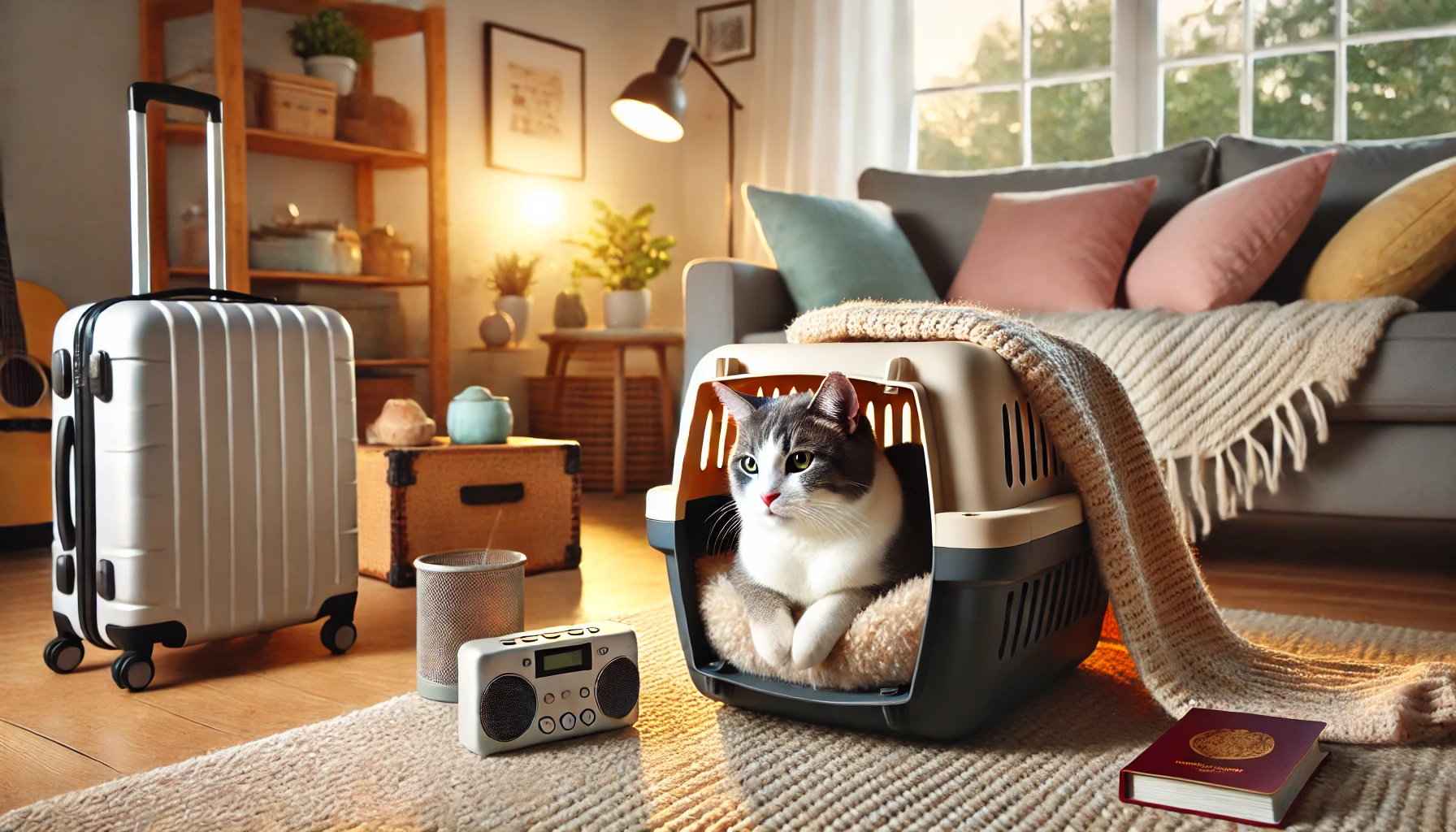
Playing Calming Music Before the Trip
It’s essential to introduce calming music to your cat well before the journey begins.
Playing calming music at home or in their carrier for several days leading up to travel can help your cat associate it with a comfortable and familiar place.
This can act as a stress release once the journey starts, as the cat will already be comforted by the familiar sound.
Ideally, you should play calming music 15-30 minutes before placing your cat in the vehicle or getting ready for a flight.
This preconditions your cat to relax and helps them stay calm once the trip begins.

Using Music in the Car to Soothe Your Cat
Car travel can be overstimulating for cats due to the constant motion, unfamiliar sounds, and new smells.
Playing calming music softly in the car can help mask some of these unsettling sounds.
Make sure the music is low, smooth, and continuous throughout the drive to maintain a peaceful environment for your cat.
- Play calming music right after placing your cat in the carrier
- Keep the volume low to avoid startling your pet
- Choose music that is steady and free of sudden loud changes
Take breaks during long trips, and continue to play the music while your vehicle is stopped to help your cat stay calm at rest stops.
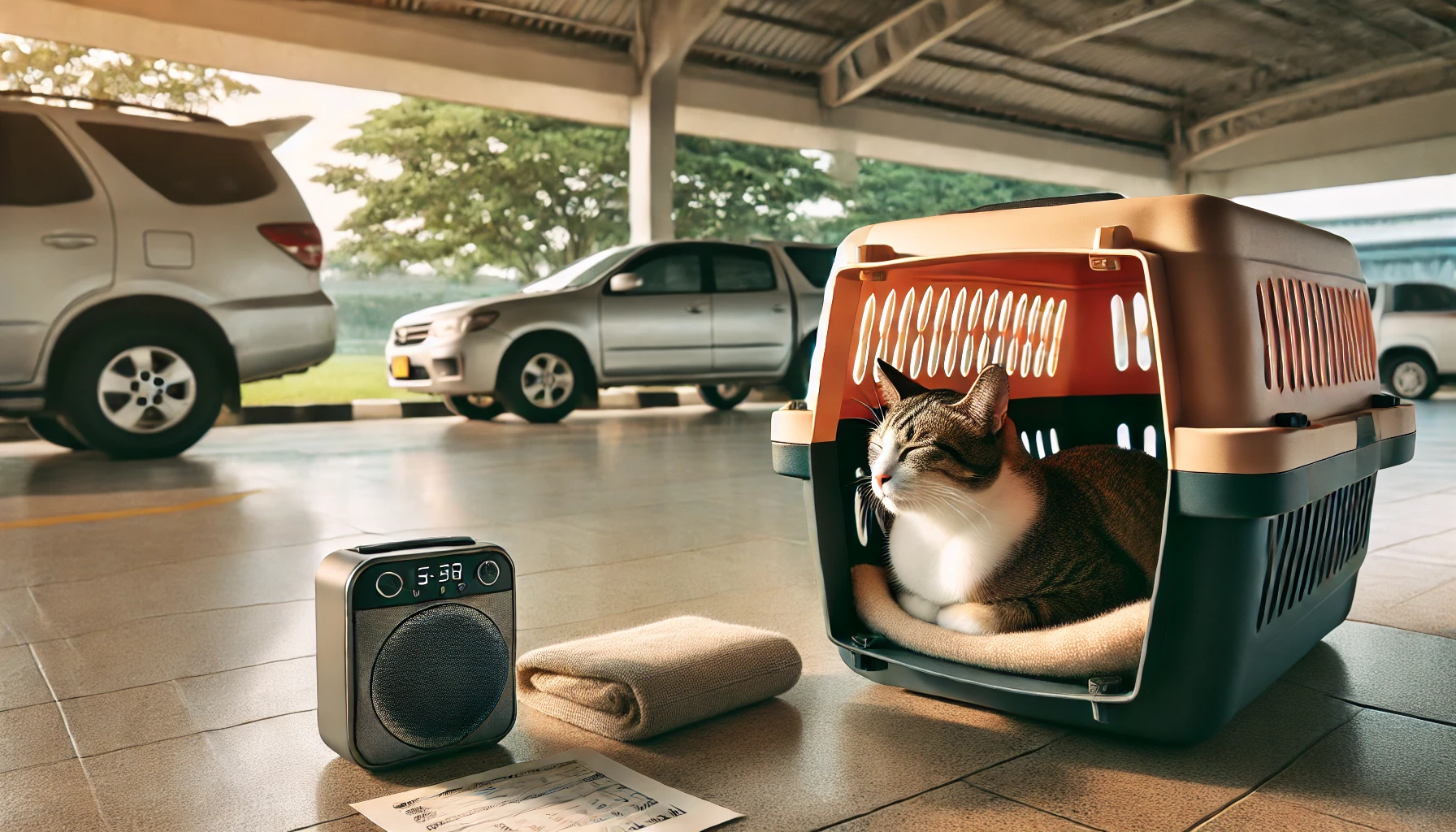
How to Use Music at Stops or Layovers
During longer trips with stops or layovers, it’s equally important to use calming music.
Stopping in new environments can raise your cat’s stress levels, so playing familiar calming music during breaks will help maintain comfort and continuity.
Whether you’re stopping at a roadside rest area or waiting during a layover at the airport, continuing to play calming music helps mask unfamiliar sounds and keeps your cat focused on something familiar.
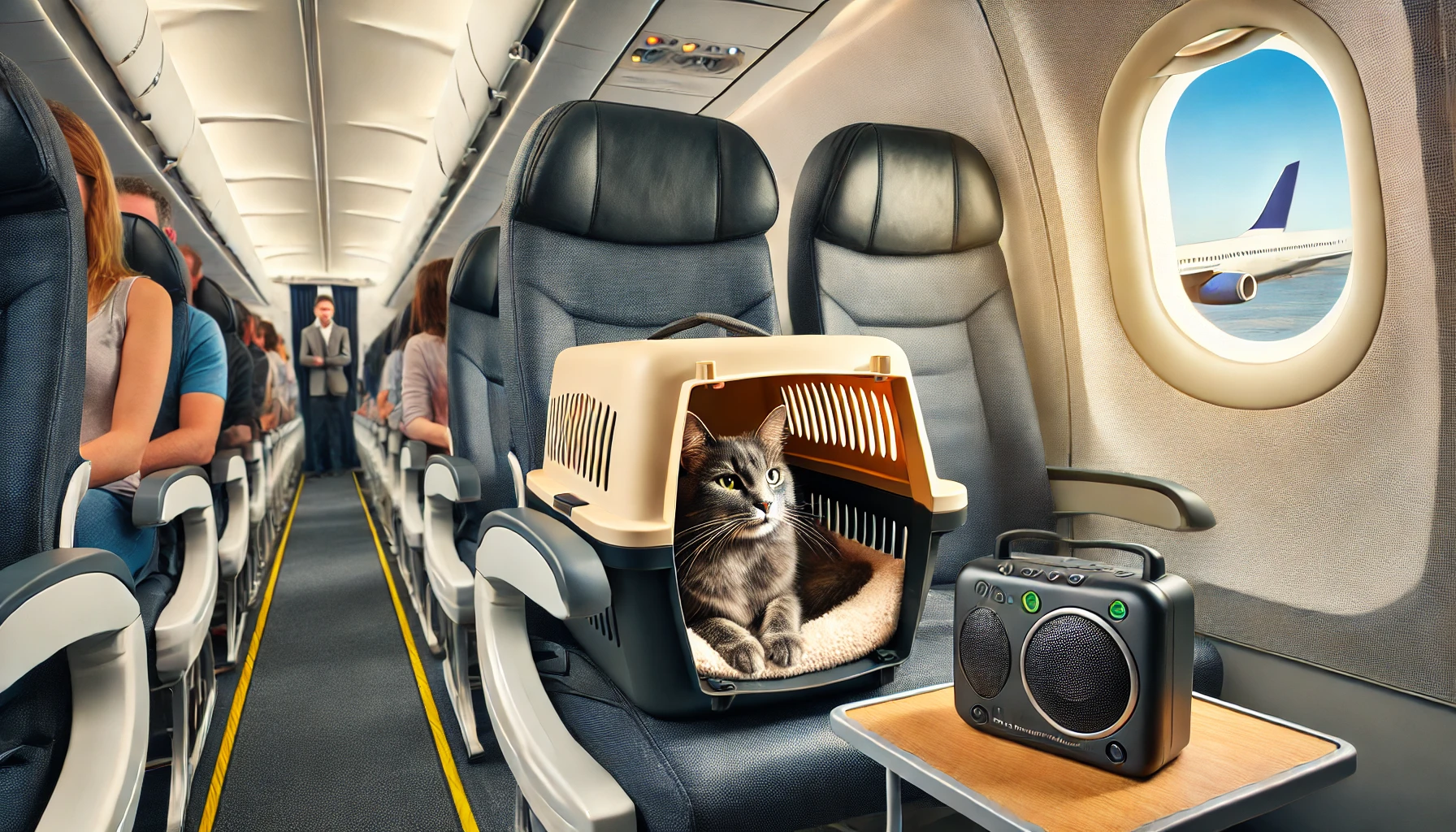
Tips for Playing Calming Music During Air Travel
Air travel can be stressful for cats due to loud noises, pressure changes, and confined spaces.
When flying with your cat, start by playing calming music before boarding to relax your pet.
Portable speakers or headphones near your cat’s carrier can be useful in such situations.
Be sure to check airline regulations to follow all guidelines for in-flight use of music devices.
- Play calming music while waiting at the airport before boarding
- Keep the volume low so it doesn’t disturb others around you
- Bring a portable speaker or download music onto a device for in-flight use
Maintaining a calming atmosphere throughout the air travel process can significantly reduce your cat’s stress, helping them cope with the unfamiliarity of flying.

How to Adjust Music Based on Your Cat’s Behavior
It’s essential to pay attention to how your cat reacts to the calming music during travel.
Some cats respond to it right away, while others may take more time to adjust.
If your cat seems restless or unaffected by the music, try adjusting the volume, switching to a different type of calming sound, or incorporating short breaks to avoid overstimulation.
No two cats are the same, so be patient and observe which type of music your feline companion prefers.
Adjusting the music based on your cat’s behavior will make the travel experience more comfortable and enjoyable for both of you.
Timing is crucial. Start playing calming music before the journey and continue throughout to help your cat adjust to the travel environment.
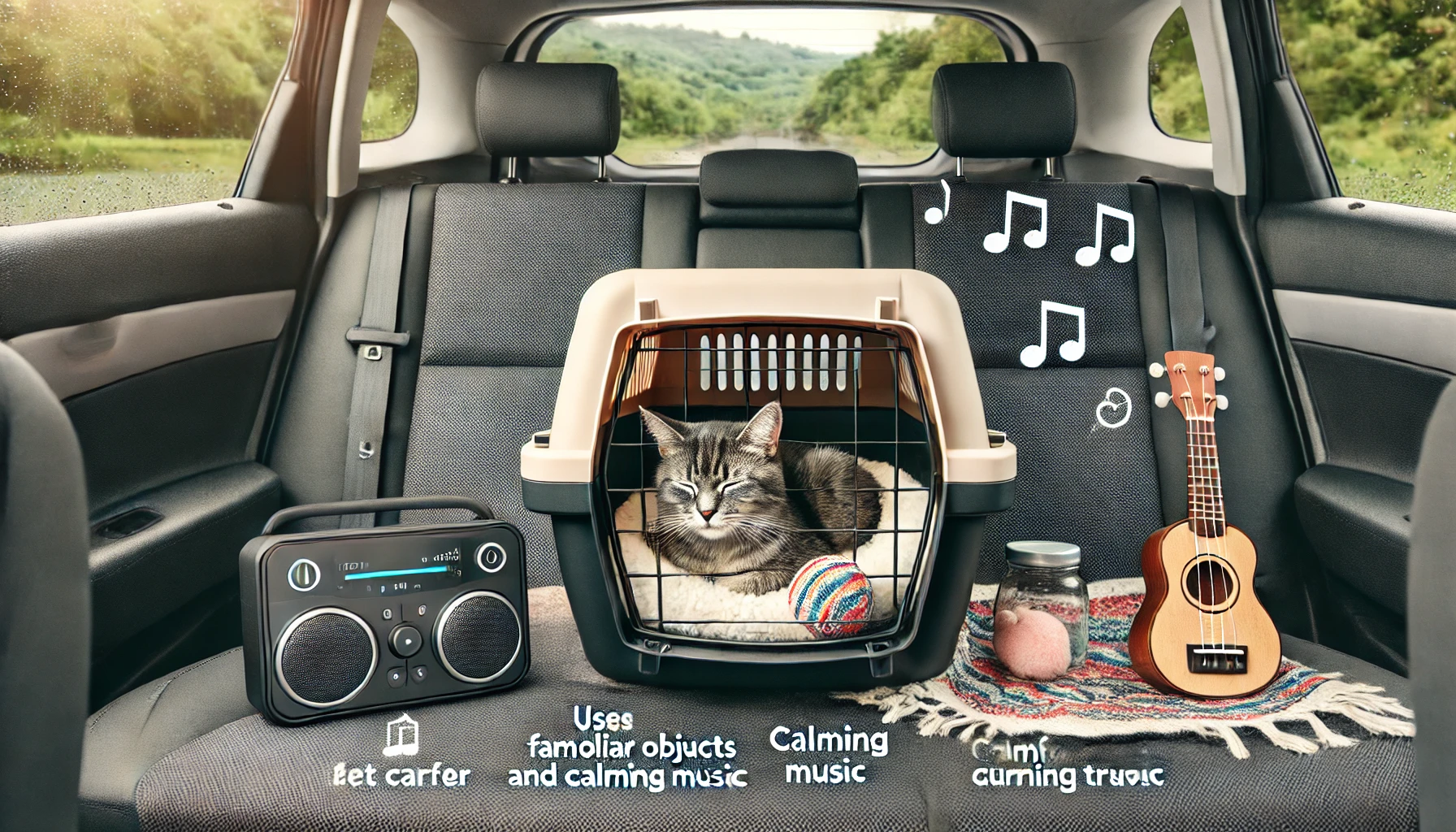
Additional Pet Travel Tips to Comfort Your Cat
Apart from playing calming music, there are practical steps you can take to make your cat’s travel experience as smooth as possible.
Combining these methods with calming music can reduce anxiety and help your cat stay relaxed throughout the journey.
From creating a comfortable setting to using calming scents, these additional tips can go a long way in ensuring a completely stress-free trip for your cat.
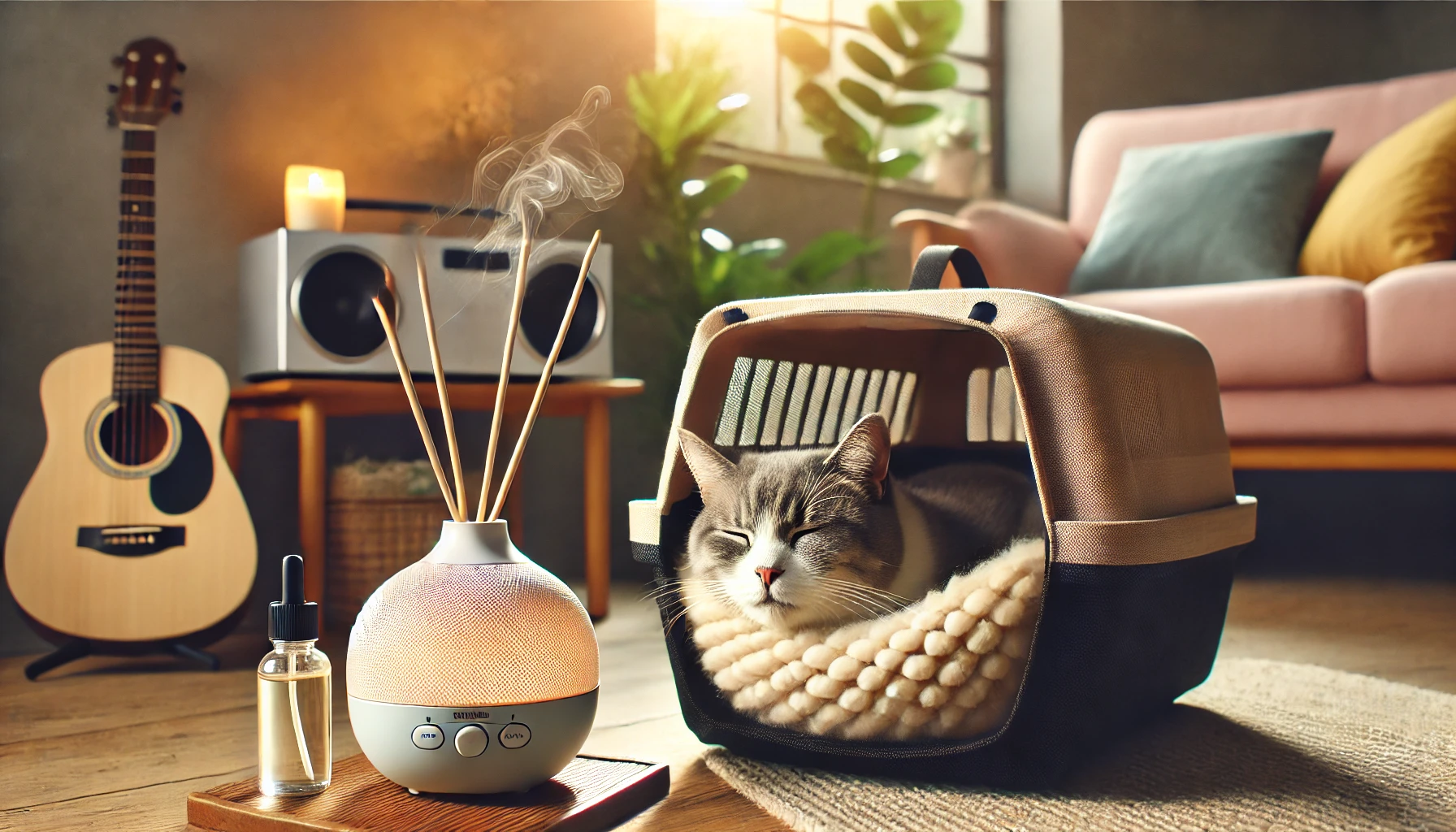
Using Calming Fragrance Along with Music
You can also use natural calming fragrances alongside calming music to soothe your cat during travel.
Cat-friendly essential oils, such as lavender or chamomile, and pheromone-based products like Feliway sprays, are known to create a tranquil atmosphere.
These scents will complement the calming effects of music and create a multisensory relaxation experience for your cat.
However, ensure any fragrance or product used is specifically designed for cats to avoid adverse reactions.
Spray or diffuse these scents around the carrier or in the car before starting your journey.
Along with calming music, these scents will help your cat feel more at ease in the new environment.
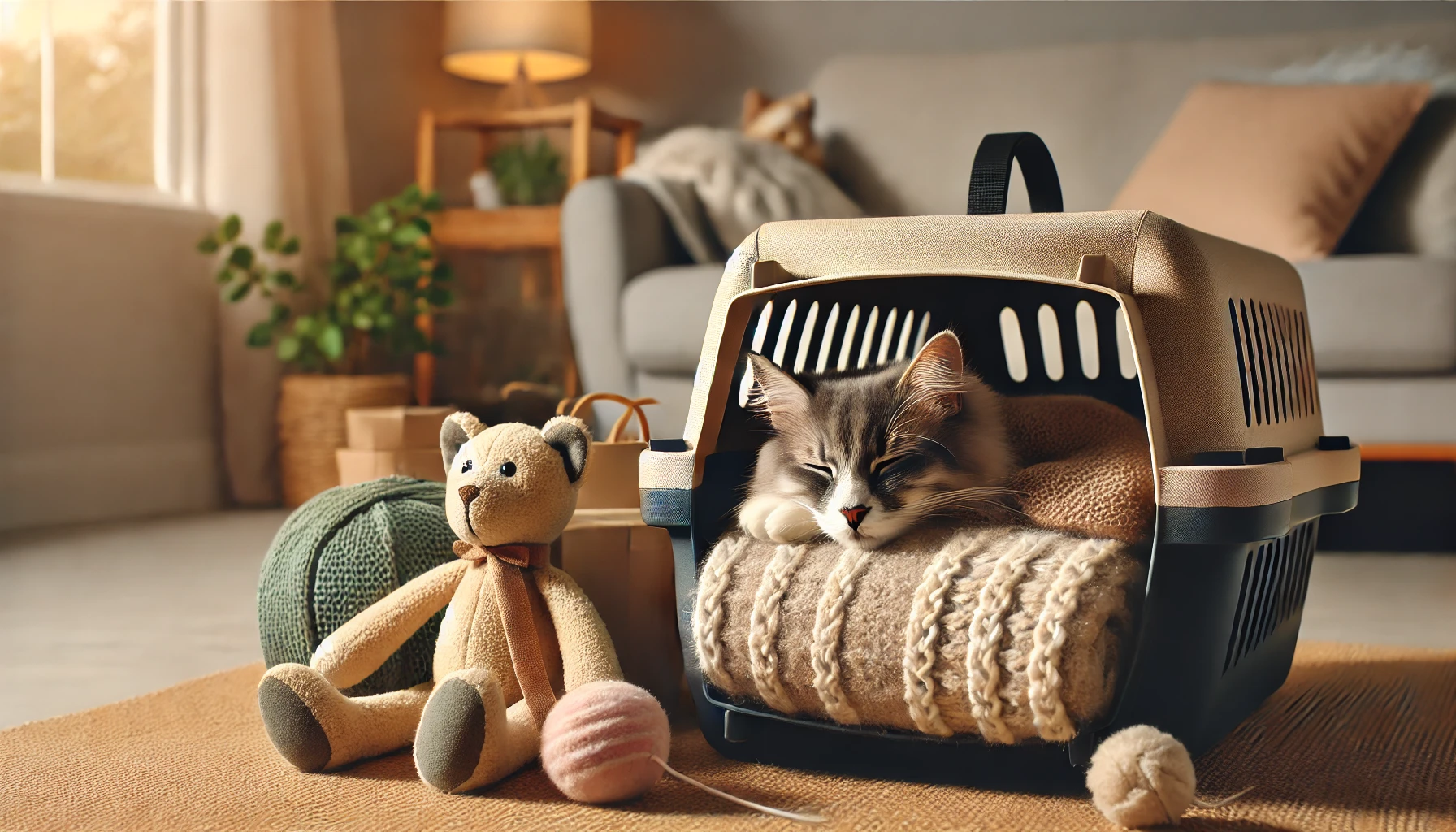
Familiar Objects and Their Comforting Effects
Travel can disorient cats, so bringing familiar objects is an effective way to soothe them.
Items such as your cat’s favorite blanket, toys, or even an article of your clothing can provide comfort.
The familiar smells and textures of these objects help make your cat feel more secure during travel.
Placing these items in the carrier, along with calming music, will give your cat a sense of home while on the road.
- Place your cat’s favorite blanket or bed in the carrier
- Include some of your cat’s favorite toys for extra comfort
- An article of your clothing with your scent can also help relax your cat
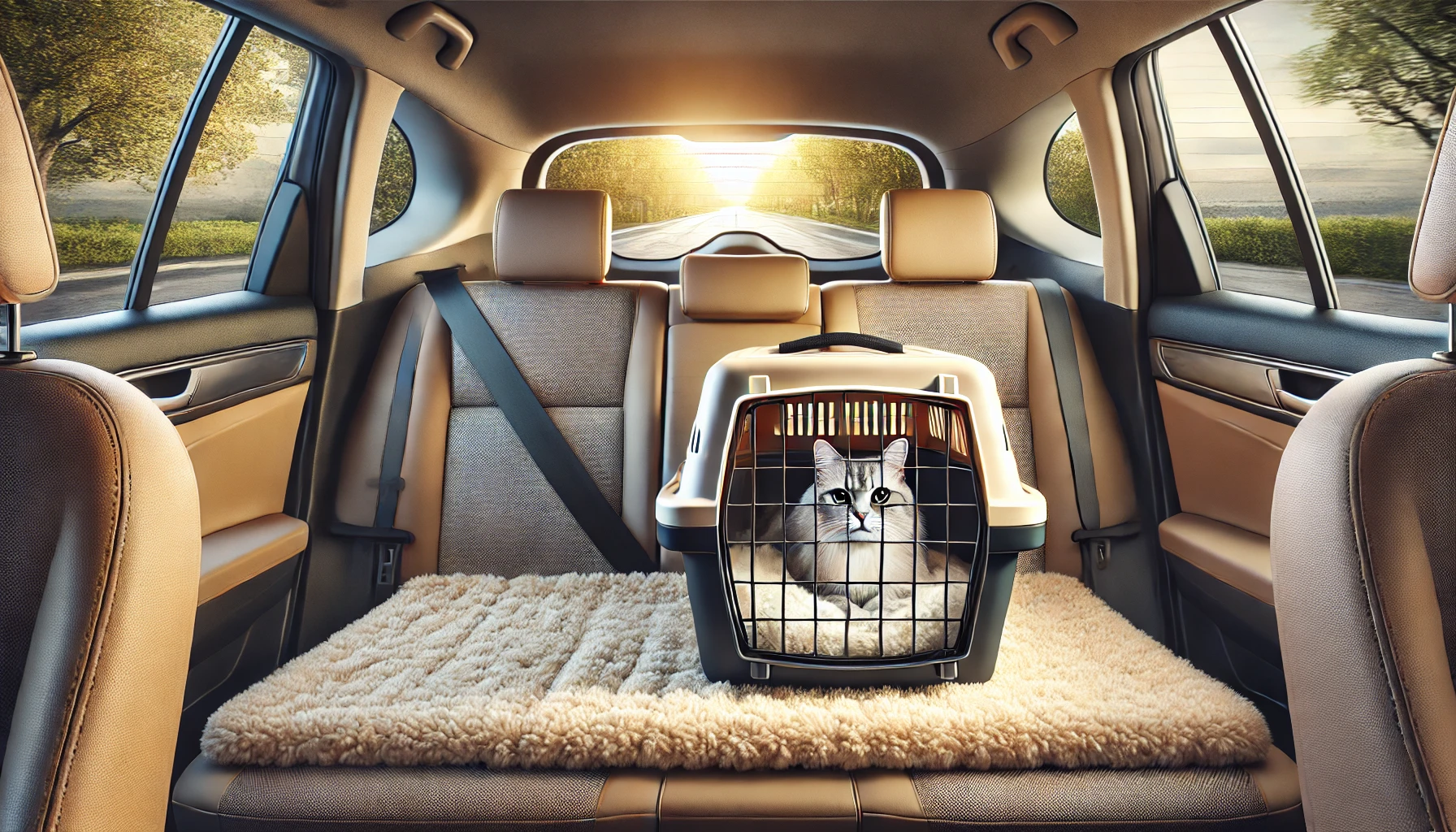
Creating a Comfortable and Safe Travel Environment
Ensuring your cat’s comfort and safety during travel is key to reducing anxiety.
In addition to playing calming music, your cat’s carrier should be the right size—neither too big nor too small.
The carrier should be well-ventilated and lined with soft bedding to provide comfort during the trip.
Proper ventilation prevents your cat from feeling trapped or overheated, while soft bedding adds extra cushioning.
Secure the carrier firmly in the car to prevent it from jolting or sliding.
Keeping your cat’s carrier stable in a safe, quiet area of the car can significantly reduce their stress, especially on longer trips.
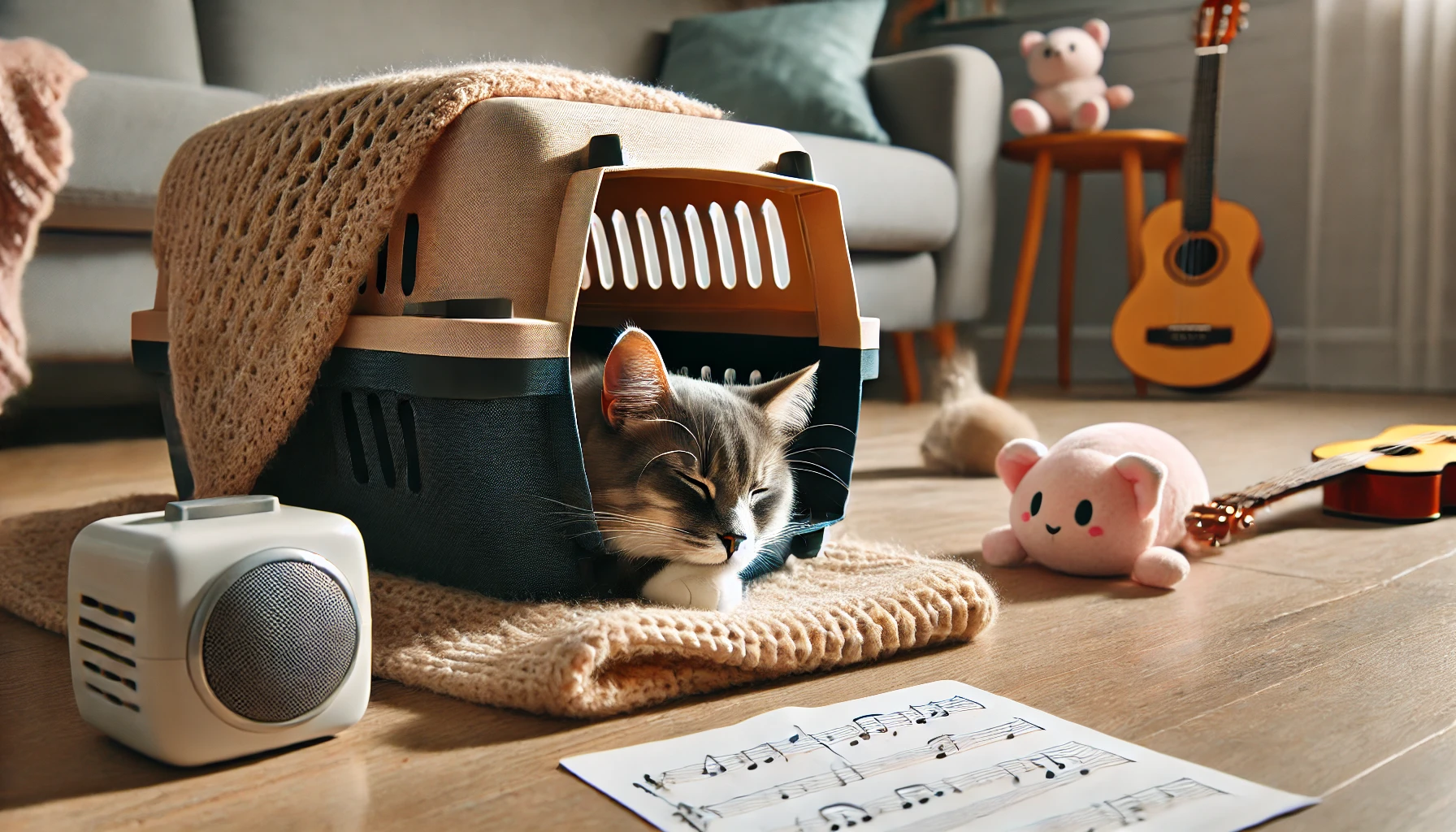
How to Get Your Cat Accustomed to Calming Music Before the Trip
Introduce calming music to your cat in the days or weeks leading up to the trip.
Play the music at home during naptime or quiet moments when your cat is already relaxed.
This helps your cat associate the music with positive experiences and prepares them for travel.
By getting your cat used to calming music beforehand, you can reduce the impact of new sensations during travel, making the process smoother for both you and your cat.

How to Monitor Your Cat’s Reaction to Calming Music
Not every cat will respond to calming music in the same way, so it’s important to monitor your cat’s reaction while traveling.
Some cats will relax immediately, while others may take longer to adjust.
If your cat seems calm and is resting comfortably, the music is likely working.
If your cat remains agitated or stressed, consider adjusting the volume or trying a different type of music.
Your cat’s comfort and well-being should always come first, so don’t hesitate to make adjustments to ensure a smooth and peaceful journey for them.
Combine calming music with familiar objects, like your cat’s blanket or toy, to create a stress-free environment during travel.
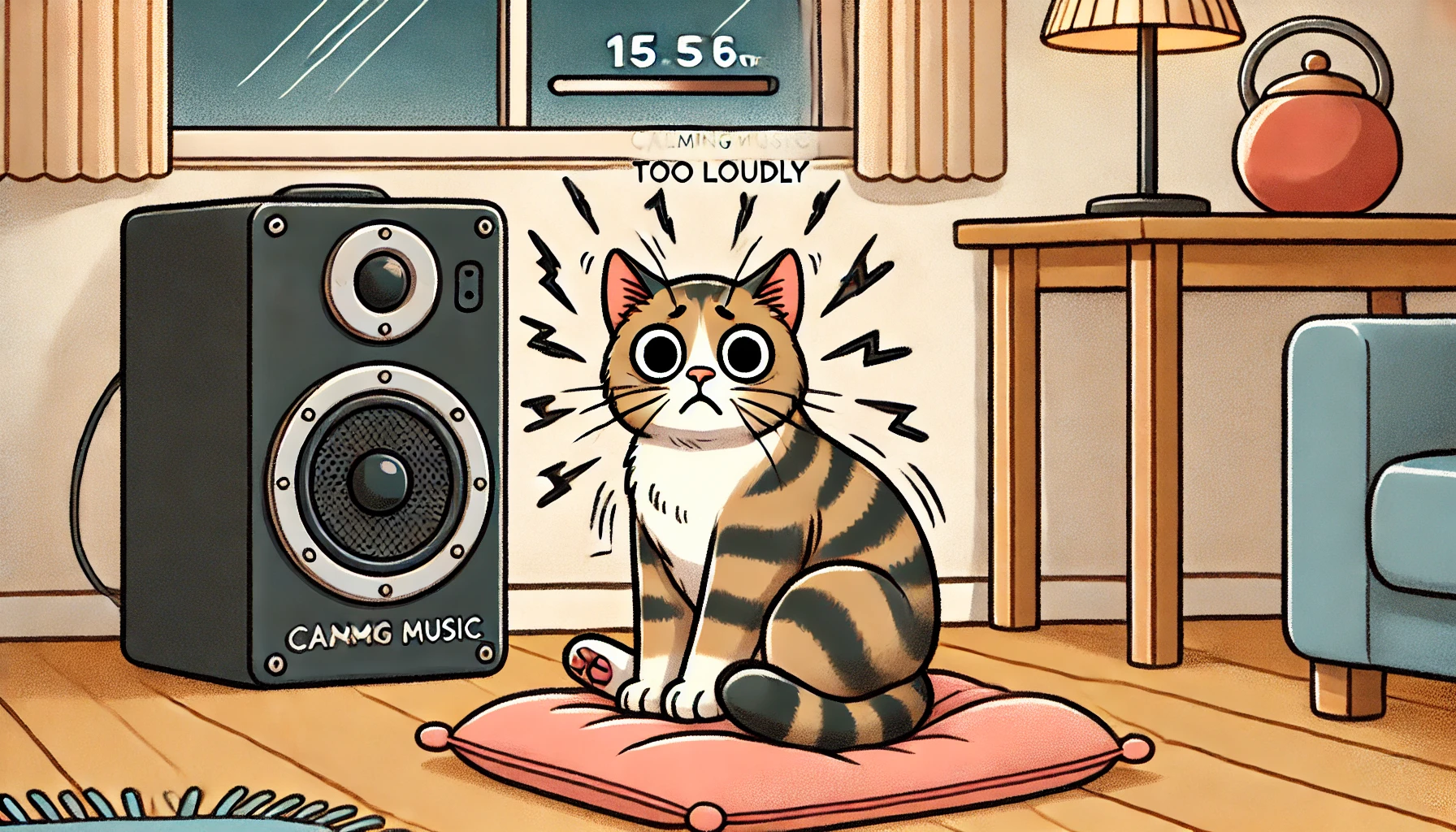
Common Mistakes When Using Calming Music for Cats
Though calming music can be a very potent tool in helping your cat reduce anxiety during travel, pet owners may make some mistakes that reduce its effectiveness or even increase stress.
Being aware of these common mistakes will help you use calming music more effectively and ensure your cat has a peaceful travel experience.

Avoid Playing Music Too Loud
One of the most common mistakes is playing calming music too loudly.
Cats have much sharper hearing than humans, and what may sound soft to you might actually be very loud to them.
As a result, loud music can increase anxiety, which is the opposite of what you’re trying to achieve.
Always play low, gentle calming music that won’t startle or overwhelm your companion.
The volume should be soft and even, loud enough to mask background noise but not so loud as to be intrusive.
If your cat seems disturbed, lower the volume even more to ensure a soothing environment.

Don’t Wait Until Your Cat is Already Stressed
Another mistake pet owners make is playing calming music only after the cat is already stressed.
If your cat is already anxious, it may take longer for the music to take effect, or it might not work as well at all.
It’s better to play calming music before stress arises, such as right before placing your cat in the carrier or at the start of the journey.
This allows you to calm your cat in advance, creating a more relaxing atmosphere from the beginning of the trip.

Selecting Music That’s Too Complex
Calming music for cats should be simple, with soft rhythms and repetitive patterns.
Music that is too complex, or that includes sudden changes in tempo, volume, or instruments, can confuse and unsettle cats.
Stick to calming pet music or soft classical and nature sounds with gentle, slow rhythms.
Avoid tracks with jarring loud notes, sudden tempo changes, or high-pitched instruments, as these may disrupt the calm atmosphere and increase your cat’s anxiety.

Not Considering Your Cat’s Specific Preferences
Like humans, cats have specific preferences when it comes to the type of music they enjoy.
Some cats may respond better to classical music, while others might prefer nature sounds.
It’s important to observe your cat’s reactions and adjust accordingly.
What works for one cat may not work for another, so experimenting with different types of calming music is key.
Try playing several types of calming music and gauge your cat’s response.
If they seem relaxed and calm, you’ve likely found a good match.
If not, try another genre to see what works best for your feline friend.
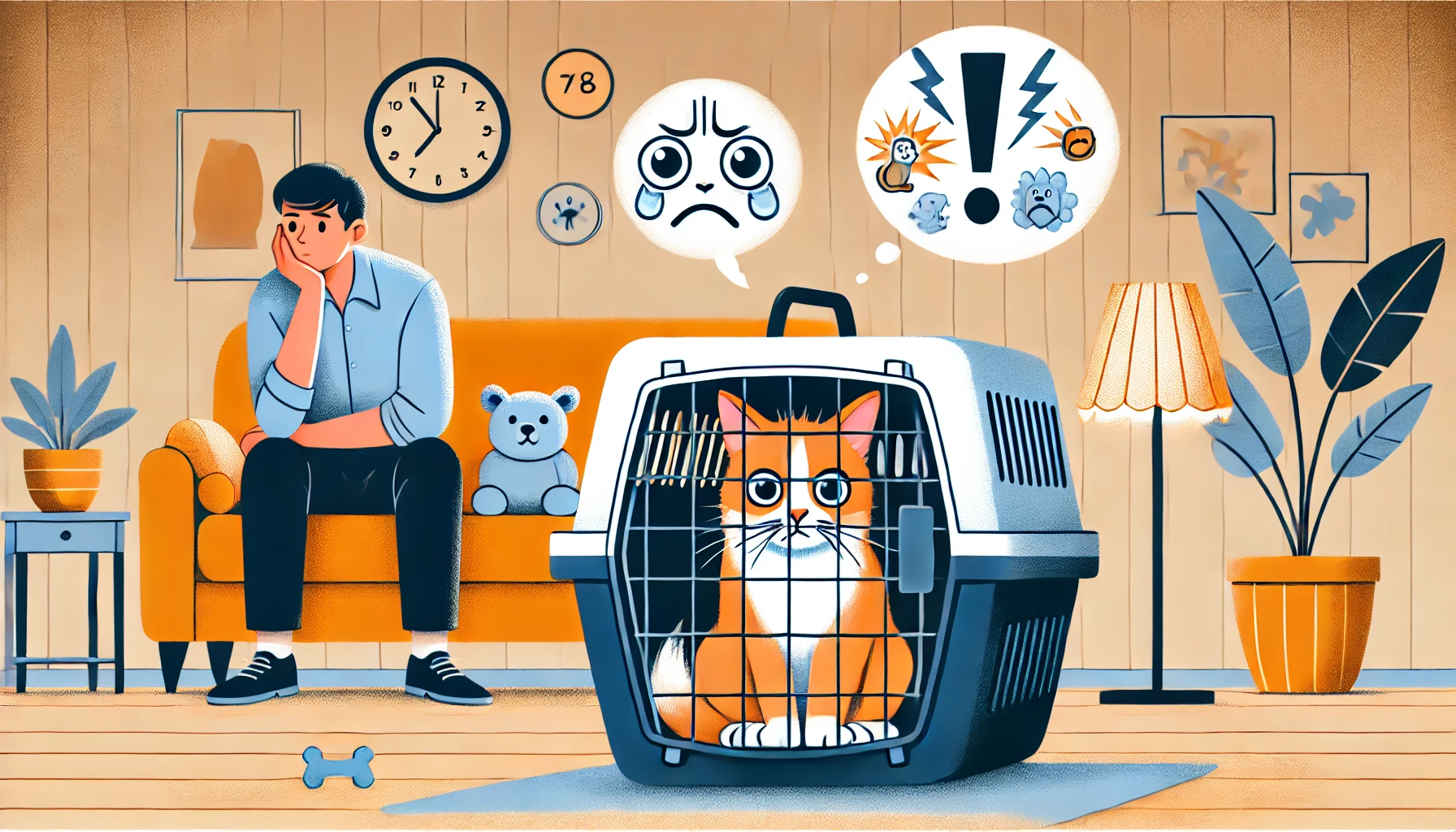
Ignoring Other Soothing Strategies
While calming music is a great tool to help minimize your cat’s travel anxiety, it should not replace other comforting strategies.
Don’t rely on music alone to calm your cat.
Make sure your cat’s carrier is comfortable and secure, bring along some of their favorite items like blankets or toys, and consider using calming sprays or treats alongside the music.
By combining these additional strategies with calming music, you can take a comprehensive approach to reducing your cat’s travel anxiety, making the journey a more pleasant experience for both of you.
Avoid playing music too loudly or waiting until your cat is already stressed before using calming music. Prepare in advance for the best results.
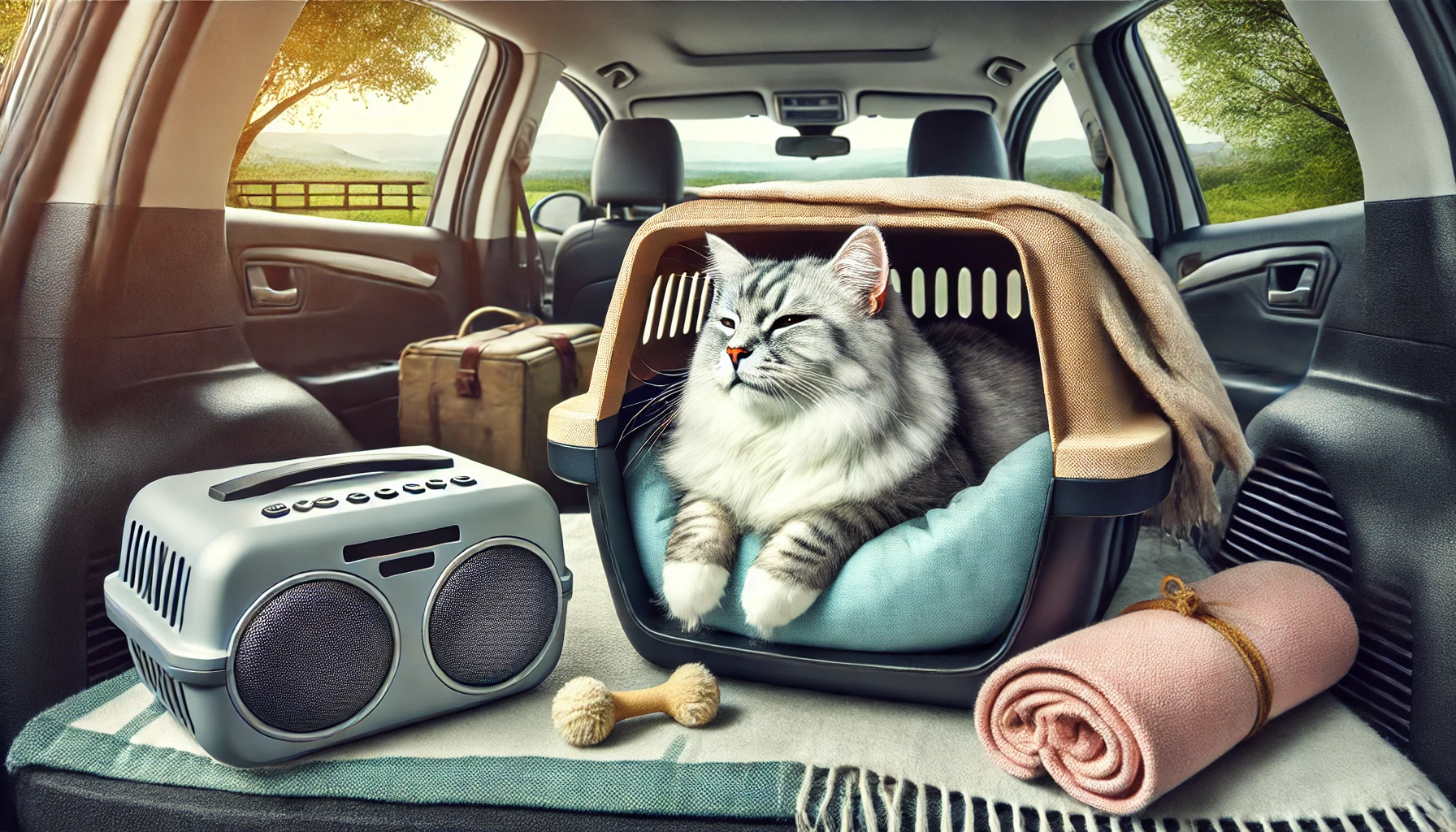
Summary: How Calming Music Can Make Travel with Cats Stress-Free
Traveling with cats does not have to be a stressful experience for you or your feline friend.
By incorporating calming music into your travel routine, you can significantly reduce the anxiety your cat may face.
Whether it’s a short drive or an extended journey, calming music can be one of the most effective ways to keep your cat relaxed throughout the trip.
Throughout this article, we have discussed various types of calming music and their positive effects on your cat during travel.
Calming music helps reduce stress and anxiety while allowing your cat to adapt to unfamiliar environments.
It is an easy and efficient way to provide your pet with a more comfortable travel experience.
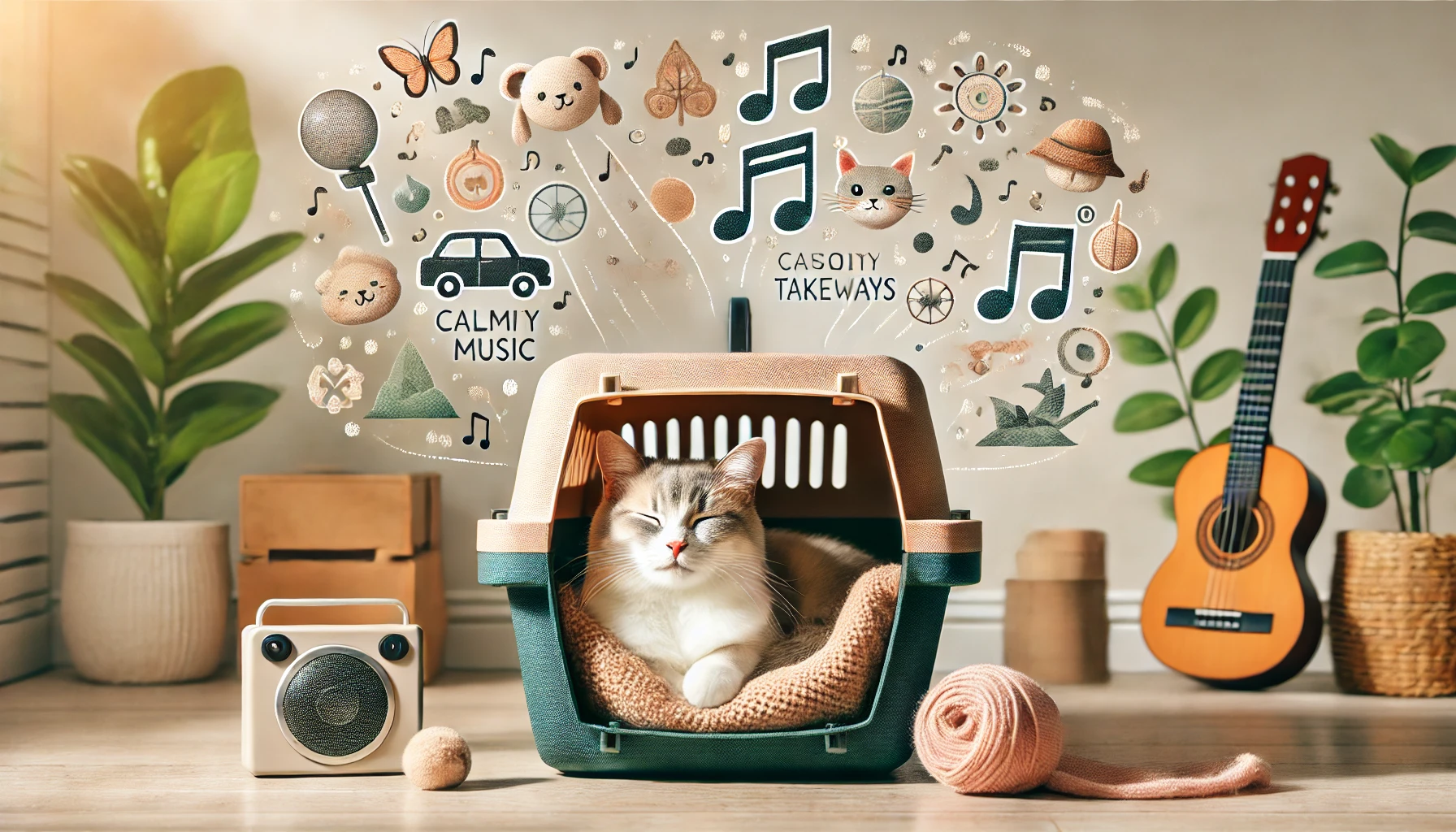
Key Takeaways
Here are a few key strategies for ensuring a smooth and enjoyable trip with your cat, accompanied by calming music:
- Introduce calming music before the trip to create a relaxing atmosphere.
- Choose music specifically made for cats, or opt for soft classical or nature sounds with gentle rhythms.
- Keep the volume low to avoid startling your cat, as their hearing is much more sensitive than ours.
- Combine calming music with other comforting techniques, such as familiar objects, calming sprays, and a cozy travel setup for your pet.

How to Create a Stress-Free Journey
By playing calming music at the right volume and combining it with other comfort measures, you can create a stress-free travel experience for your cat.
Avoid common mistakes, such as playing the music too loudly or waiting until your cat is already stressed.
Adjust the music based on your cat’s specific preferences.
Each cat is unique, so it’s important to observe how your cat reacts to different types of calming music.
With proper preparation and thoughtful strategies, you can ensure that your cat remains calm and comfortable throughout the journey.

Conclusion: The Magic of Calming Music
Calming music offers a simple yet highly effective way to reduce your cat’s anxiety during travel.
Whether you’re taking your cat on a road trip or flying across the country, adding calming music can make all the difference in creating a stress-free experience.
By understanding your cat’s preferences and integrating calming music into your travel routine, what could be a stressful experience can become calm and pleasant.
So, the next time you travel with your cat, remember that calming music might be the key to a more enjoyable, less stressful journey—for both you and your feline companion.

Frequently Asked Questions About Calming Music for Traveling Cats
Here are some of the most common questions cat owners face when using calming music during travel.
These answers will help you better understand how calming music can be used for your kitty during travel.
How does calming music help reduce travel anxiety in cats?
Calming music creates a soothing environment that reduces outside noise and vibrations, which helps calm a cat’s nervous system and keeps them relaxed during the journey.
When should I play calming music for my cat?
Play calming music 15 to 30 minutes before the journey begins to pre-condition your cat to a state of calm.
This helps keep them relaxed once the journey starts.
What type of music can help cats relax while traveling?
Music specifically composed for cats, soothing classical pieces, and nature sounds with slow, repetitive rhythms are most effective at calming cats during travel.
Can I play calming music too loudly for my cat?
Yes, cats have sensitive hearing, and playing calming music too loudly can startle or overwhelm them, worsening anxiety.
Play the music softly and gently for the best effect.
Can I combine calming music with other techniques to help my cat relax?
Yes!
Combining calming music with familiar objects, a cozy carrier, and calming sprays or treats will create a more stress-free experience for your cat.
What if my cat is not responding to calming music?
If your cat doesn’t respond to the music, try adjusting the volume or switching to different styles like nature sounds until you find what works best.





